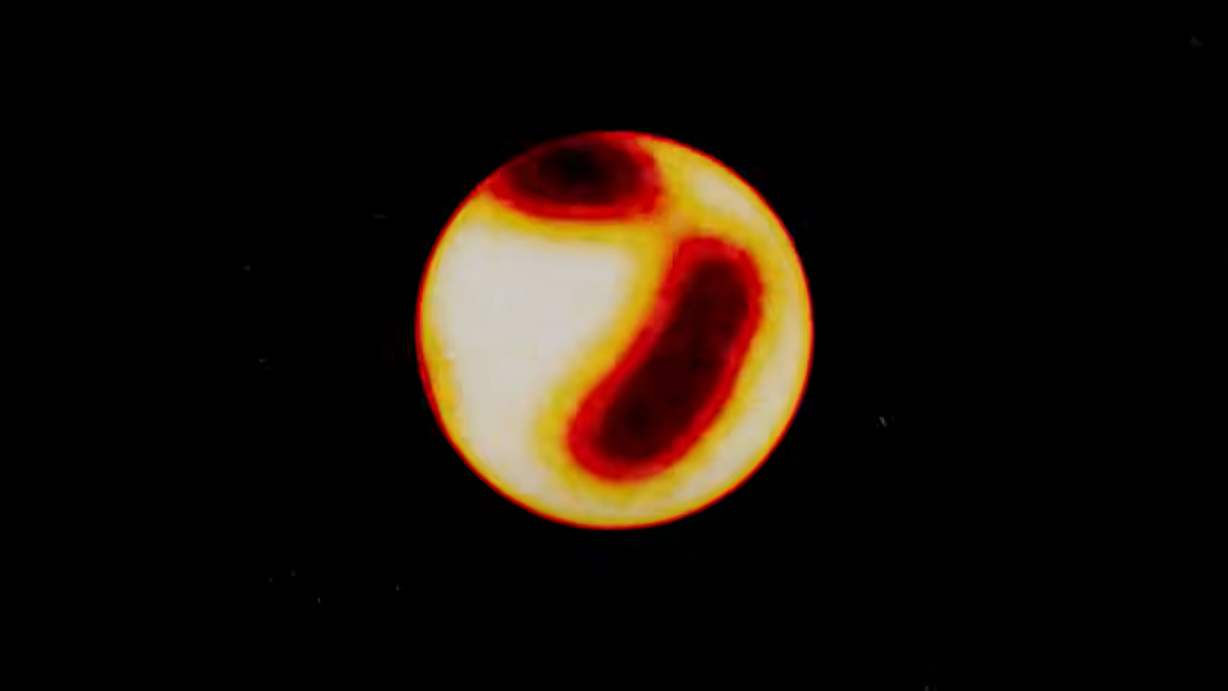
Sunspots, which are temporarily darkened areas on the surface of the sun, are the result of intense magnetic fields generated through the movement of materials within the sun. In other words, they can tell us indirectly about what’s happening within our home star. And importantly, these spots aren’t unique to the sun — astronomers have observed this behaviour in a number of stellar bodies in our galactic vicinity. Those are more generally known as starspots, and can tell us about the interiors of their respective stars, too.
Starspots in general can last from days to months, and can migrate across the surface of their star. Tracking the behaviour of sunspots on the sun is important because increased sunspot activity is associated with the increased emission of charged particles from the sun — and this activity can have drastic consequences for our technology on Earth.
Thankfully, our sun’s sunspot activity occurs along an approximate 11-year cycle, giving us some indication of when to expect this solar weather. Recently, however, astronomers have been keeping track of starspot activity on a red giant star called XX Trianguli, and the irregular behaviour of its starspots suggests its interior may have much more chaotic dynamics than our own star’s
Researchers from the Leibniz Institut for Astrophysics Potsdam (AIP) and the HUN-REN Research Center for Astronomy and Earth Sciences (HUN-REN RCAES) analyzed over 2,000 high-resolution spectra collected over 16 years with AIP’s STELLA robotic telescope in Tenerife. This treasure trove of data allowed the researchers to reconstruct 99 time-series images that showed the evolution of starspots on the surface of XX Trianguli from 2006 to 2022.
A central finding of the research showed that surface changes in starspots on XX Trianguli do not follow sun-like magnetic cycles, which the authors say is likely down to the non-periodic nature of the star’s dynamo — movement of conducting materials inside the star. Unlike the sun, XX Trianguli’s dynamo is most likely chaotic.
“Sunspots are the most well-known manifestations of solar magnetic activity, which, together with many other phenomena, such as solar flares or the solar cycle, can be linked to the dynamo mechanism operating inside the sun,” co-author Zsolt Kővári explained in a statement.
“The large-amplitude variations in the brightness of the red giant XX Tri have been observed before, so it was also known that the variations were caused by dark spots, coming in and out view as the star rotates around its axis in 24 days. These spots are even larger than the entire surface of our sun — which is why XX Tri has been dubbed “the most spotted star in the sky,” Kővári said.
The study was also the first to show how extremely large starspots can cause a small displacement of where a star appears in the sky. While the photocenter (center of light) of a uniform (unspotted) star will appear where its geometric center is located, huge starspots can repel the photocenter in the opposite direction of its starspots.
For XX Trianguli, which is 630 light-years from Earth, the photocenter of the stellar disk can shift up to 10% of the star’s radius relative to its geometric center, causing a displacement of 24 micro-arcseconds in the apparent position of the star in the sky (the diameter of a hair at a distance of 1,000 kilometers, or 621 miles). While this sounds tiny, such small discrepancies can scale up over vast intergalactic distances.
While the study will help astrophysicists understand the behaviour of starspots and the internal dynamics that drive them, it is also a reason to be thankful that we orbit a star whose activity is, for the most part, predictable.
The study was published on Dec. 4 in the journal Nature Communications.









Leave a Comment